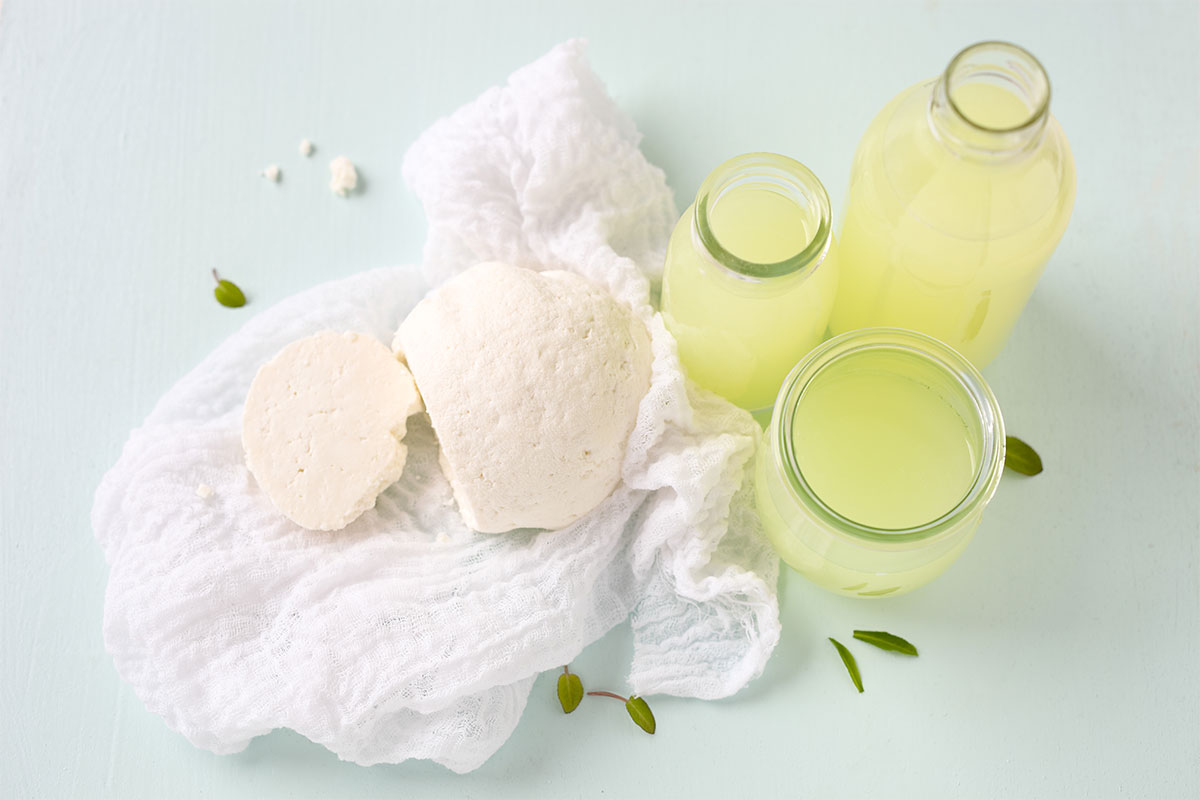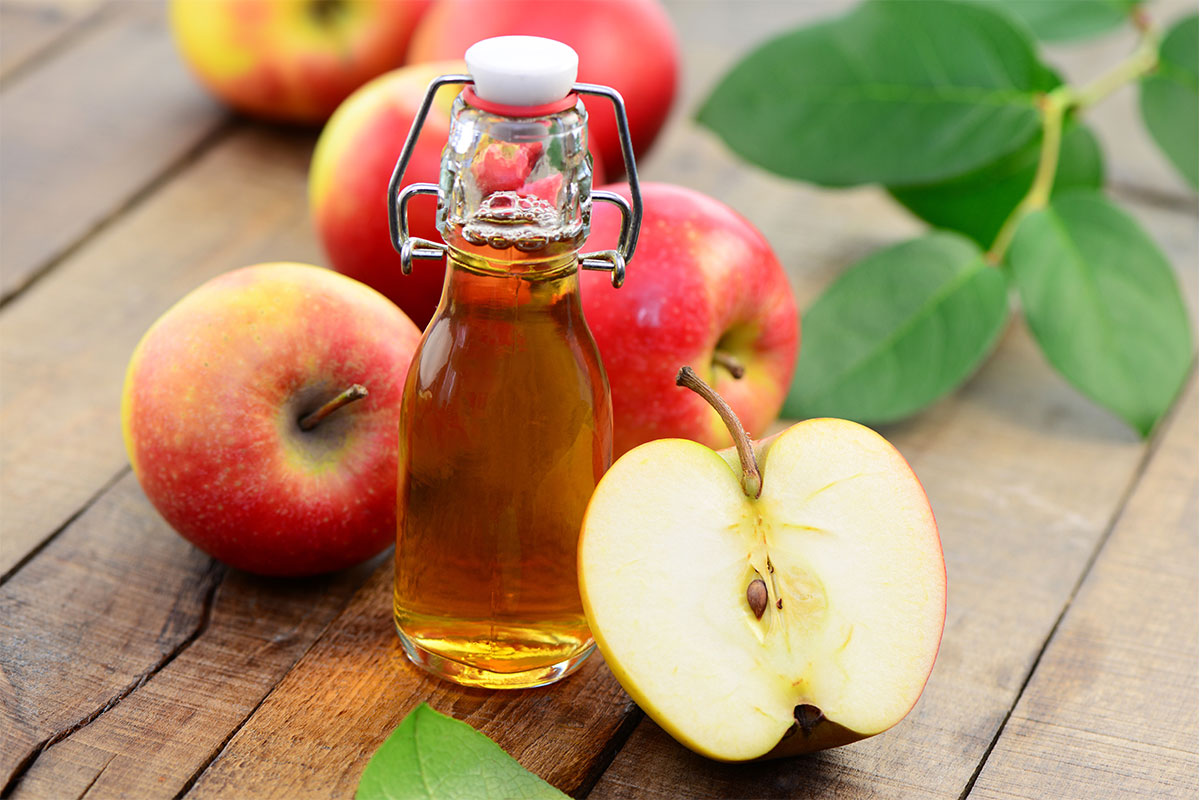Nutritious Green Foods You Didn’t Know About
Good nutrition is all about variety! Browse through our list of unusual fruits and veggies and give yourself a chance to try something new.


As I cut down on my meat consumption, I am eating a lot of peanut butter. What is the big difference comparing, say Skippy and 100% peanut butter? Does natural and organic matter? How about calories?
– Kevin

Great question, Kevin! There are a lot of peanut butters to choose from. Traditionally, PB has a smidge of oil, sugar, and salt added for flavor and processing to get that super creamy, easily spreadable quality. Some food stores have a pre-loaded grinder for you to make the peanut butter yourself without adding anything, and the result is a bit grainy. Nutritionally, there is little difference per 2 tablespoons serving between commercial and homemade PB. Now, if you eat almost a cup of conventional jarred PB per week, you would be getting more salt and carbohydrates, but fewer calories and protein than PB made straight from ground peanuts*.
There are sugar-free and salt-free jarred options available, you just have to look for them. One natural brand I like now offers PB pre-stirred “smooth” so the natural oils don’t separate out to the top and it’s not grainy. Organic peanut butter probably has less pesticide residue, but there is little nutritional difference, depending on the brand.
*According to the USDA Food Composition Database for Standard Reference Legacy Release, April 2018, for 200 grams (first brand listed for last 2 columns descriptors):
| Smooth Peanut Butter (conventional) | Unsalted Creamy PB (peanuts only) |
Organic Unsalted Creamy PB (peanuts only) |
| 1176 Calories | 1312 Calories | 1250 Calories |
| 43.9 gm protein | 50 gm protein | 50 gm protein |
| 99.1 gm fat | 100 gm fat | 106.3 gm fat |
| 48 gm carbohydrate | 37.5 gm carbohydrate | 37.5 gm carbohydrate |
| 11.4 gm fiber | 12.4 gm fiber | 12.4 gm fiber |
| 13 gm sugar | 6.3 gm sugar | 12.5 sugar |
| 952 mg sodium | 0 mg sodium | 32 mg sodium |
– Debbie J., MS, RD
This article should not replace any exercise program or restrictions, any dietary supplements or restrictions, or any other medical recommendations from your primary care physician. Before starting any exercise program or diet, make sure it is approved by your doctor.
Some questions have been edited for length and/or clarity.
 Have a nutrition question? Our registered dietitian is ready to help!
Have a nutrition question? Our registered dietitian is ready to help!
Email nutrition@lafitness.com or submit your question below and it may be featured in an upcoming article!
Good nutrition is all about variety! Browse through our list of unusual fruits and veggies and give yourself a chance to try something new.
Does liberally salting your food help you pump more iron in the gym? Registered Dietitian, Debbie James, investigates the claims!
One frequently asked question is about the recommended intake of protein. We hear you! Here is everything you need to know.


Hello, I have a question about whey protein. I’ve been using a powdered whey protein. However, I also make my own cheese at home. A byproduct of cheese production is whey after separating the proteins with heat and a mild catalyst like lemon juice or vinegar. I’m generally wary of processed foods. My thinking is a less processed protein will be of a higher quality and a drastically low cost. It is in liquid form and kept refrigerated. What should I consider from a spoilage and nutritional standpoint? My thinking is whey protein that is less processed.
– Eric D.

So glad to hear you’re not washing your whey down the drain! Nutritionally, homemade whey protein is fully intact and not denatured like high-heat pasteurized powdered products. The liquid contains fewer chemicals and acid byproducts than commercially produced whey powder. It is also a source of vitamins A and several B vitamins and minerals original to the source milk/yogurt. In addition, there would be some vitamin C from the lemon juice used. One cup of fluid acid whey contains about 2 grams of protein, 13 grams of carbohydrate and less than 1 gram of fat, providing a total of nearly 60 calories.*
If you’re going for protein though, liquid whey isn’t that concentrated, which necessitates quite a volume of it to make an impact. Since it keeps well (lasting several months in the refrigerator) you can use the tart liquid in cooking various foods and recipes over time. Clarity or cloudiness doesn’t matter – cloudiness indicates that some of the residual casein protein may have passed through the cheesecloth. For supplementing your diet to support exercise, convenient alternatives to powdered whey protein include hard-cooked egg whites and canned tuna in water.
*National Nutrient Database for Standard Reference, Release April, 2018
– Debbie J., MS, RD
This article should not replace any exercise program or restrictions, any dietary supplements or restrictions, or any other medical recommendations from your primary care physician. Before starting any exercise program or diet, make sure it is approved by your doctor.
Some questions have been edited for length and/or clarity.
 Have a nutrition question? Our registered dietitian is ready to help!
Have a nutrition question? Our registered dietitian is ready to help!
Email nutrition@lafitness.com or submit your question below and it may be featured in an upcoming article!
Good nutrition is all about variety! Browse through our list of unusual fruits and veggies and give yourself a chance to try something new.
Does liberally salting your food help you pump more iron in the gym? Registered Dietitian, Debbie James, investigates the claims!
One frequently asked question is about the recommended intake of protein. We hear you! Here is everything you need to know.


I’d like to know if using Apple Cider Vinegar an hour before eating does indeed burn stored body fat. And also, does the body acclimate to this after a period of time, so would NOT taking it for a week or so make it effective again?
– Michelle

The answer is that perhaps apple cider vinegar (ACV) may help in human weight loss, but it is not proven as effective. Several small studies (mostly on animals) point to some success but they don’t make a body of evidence to say that weight loss from taking ACV is research-backed. The specific timing you mentioned is supported for insulin sensitivity, not weight loss.
Please read our previous article on ACV here: Apple Cider Vinegar – Hype or Helpful?
Almost ALL reports of apple cider vinegar and weight loss are anecdotal and inflated. Of note, one Japanese study of 155 obese individuals taking a tablespoon or ½ ounce ACV (diluted) twice a day resulted in a modest 4-pound average loss over 3 months. * It may be the acetic acid in apple cider vinegar that boosts fat metabolism in addition to suppressing appetite. All vinegars contain acetic acid and would have similar effects. Look at healthy Mediterranean-style food patterns with their higher intakes of balsamic and red wine vinegars.
As to the concept of acclimating to daily ingestion of ACV, I could not find anything in the scientific literature that indicates such specifically. Although it’s said one can refrain from caffeine for a month to reduce tolerance, I’m not sure the same would apply to vinegar.
* Vinegar Intake Reduces Body Weight, Body Fat Mass, and Serum Triglyceride Levels in Obese Japanese Subjects. Kondo T, Kishi M, Fushimi T, Ugajin S, Kaga T. Bioscience, Biotechnology, and Biochemistry 2009 (73) 8; 1837-1843
– Debbie J., MS, RD
This article should not replace any exercise program or restrictions, any dietary supplements or restrictions, or any other medical recommendations from your primary care physician. Before starting any exercise program or diet, make sure it is approved by your doctor.
Some questions have been edited for length and/or clarity.
 Have a nutrition question? Our registered dietitian is ready to help!
Have a nutrition question? Our registered dietitian is ready to help!
Email nutrition@lafitness.com or submit your question below and it may be featured in an upcoming article!
Good nutrition is all about variety! Browse through our list of unusual fruits and veggies and give yourself a chance to try something new.
Does liberally salting your food help you pump more iron in the gym? Registered Dietitian, Debbie James, investigates the claims!
One frequently asked question is about the recommended intake of protein. We hear you! Here is everything you need to know.

Have you heard? LA Fitness has officially launched its first ever podcast!
The Living Healthy Podcast acts as an extension of the Living Healthy blog but in an audio format. It’s the perfect entertainment for your drivetime commute, or for those who would rather listen to health and fitness advice rather than read about it.
Listeners will get on-demand health, nutrition, and inspirational advice to better assist them in reaching their personal fitness goals.
The inaugural episode focuses on the Top 5 Myths of Nutrition and features LA Fitness registered dietitian Debbie James.
Episodes can be found on iTunes, Google Play, TuneIn, Stitcher, and many others! Download the free LA Fitness mobile app to stream the podcast directly from our Living Healthy blog.

Jill Grueling, Executive Vice President of Operations at LA Fitness shared,
“We want to help cultivate a larger fitness network that would be able to help support and encourage each other to maintain healthier lifestyles. We believe the launch of the Living Healthy podcast will aid in providing another platform for our members and future members to stay motivated and inspired to live their best lives.”
How are we doing? What do you want to hear about? Do you have an inspirational story you’d like to share with us on air? Send us your thoughts, questions, and stories to blog@fitnessintl.com or reach out to us on one of our many social platforms (Instagram, Facebook, Twitter, YouTube, etc.) and use the tag #LivingHealthyPodcast.
You or your question could end up on the air!
Good nutrition is all about variety! Browse through our list of unusual fruits and veggies and give yourself a chance to try something new.
Does liberally salting your food help you pump more iron in the gym? Registered Dietitian, Debbie James, investigates the claims!
One frequently asked question is about the recommended intake of protein. We hear you! Here is everything you need to know.


Hi. I am trying to lose weight. Could you please give me examples of 4 ounces of protein and 1 ounce of green vegetables? Grilled chicken and broccoli every day isn’t appealing long term. Also, what would some snacks with 15 grams of protein be? Thanks.
– Mike S.

Here are some examples per your request:
| Protein equivalent to 4 oz meat/poultry | Green Vegetable | Snacks | |
| 1 can of chili beans + 1 oz. cheese | peppers (+onion, tomato) | ½ C. hummus, crudités, pita chips | |
| 2 eggs + 4 whites | spinach (+mushroom) | ½ C. cottage cheese (+pineapple) | |
| 8 oz. plain Greek yogurt | cucumber salad (+onion, tomato) | 2 Tbsp. peanut butter, celery, raisins | |
| salmon or halibut | asparagus (+garlic) | 1.5 oz. jerky (+watermelon) | |
| ahi tuna | mixed salad greens (+avocado) | ½ C. tuna salad (+crackers) | |
| pork tenderloin | green beans (+red pepper) | 1.5 oz. [50 gm] zone-type bar | |
| beef eye of round | zucchini (+ cherry tomato) | 2 oz. [1/2 C.] almonds (+apple) | |
| chicken breast | kale slaw (+cabbage, carrot) | small bean & cheese burrito | |
| turkey breast | Brussel sprouts | hard cooked egg + 3 C. popcorn |
– Debbie J., MS, RD
This article should not replace any exercise program or restrictions, any dietary supplements or restrictions, or any other medical recommendations from your primary care physician. Before starting any exercise program or diet, make sure it is approved by your doctor.
Some questions have been edited for length and/or clarity.
 Have a nutrition question? Our registered dietitian is ready to help!
Have a nutrition question? Our registered dietitian is ready to help!
Email nutrition@lafitness.com or submit your question below and it may be featured in an upcoming article!
Good nutrition is all about variety! Browse through our list of unusual fruits and veggies and give yourself a chance to try something new.
Does liberally salting your food help you pump more iron in the gym? Registered Dietitian, Debbie James, investigates the claims!
One frequently asked question is about the recommended intake of protein. We hear you! Here is everything you need to know.
Be the first to know about exclusive
content, deals and promotions